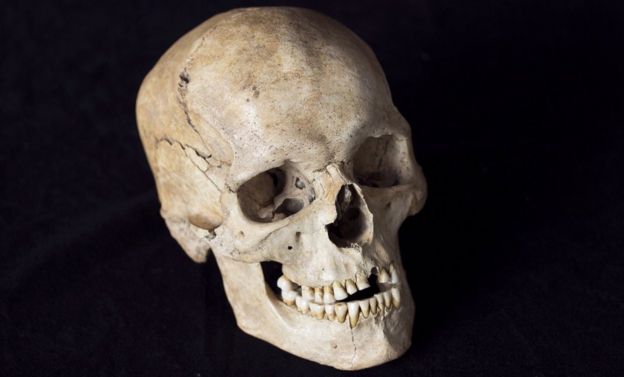Archaeologically, it correlates with cultural transitions within the Epigravettian in southern Europe and the Magdalenian-to-Azilian transition in western Europe. Thus, the appearance of the Villabruna Cluster may reflect migrations or population shifts within Europe at the end of the Ice Age, an observation that is also consistent with the evidence of mitochondrial DNA turnover. One scenario that couldexplain these patterns is a population expansion from southeastern European or west Asian refugia after the Glacial Maximum, drawing together the genetic ancestry of Europe and the Near East.
So far we know that:
-
Aurignacian people in central and western Europe belonged to mt-haplogroups
M and
R* and Y-haplogroup
C1a, while contemporary people in Romania and Russia belonged to
U*, U2 and
U6 and Y-haplogroup
CT and
C1b.
-
Gravettian people belonged to mt-haplogroups
M, U*, U2, U5 and
U8c, and Y-haplogroups
BT, CT, C1a2, F, IJK and
I.
-
Magdalenian people belonged to mt-haplogroup
U5b and
U8a and Y-haplogroups
HIJK and
I.
- One
Epigravettian person from northern Italy belonged to mt-haplogroup
U5b2b and Y-haplogroup
R1b1*.
- One
Azalian sample belonged to mt-haplogroup
U5b1h and Y-haplogroup
I2.
-
Epipaleolithic samples from France and Germany belonged to mt-haplogroup
U5b1 and
U5b2 and Y-haplogroup
I.
Note that six years ago I attempted to
retrace the original mtDNA of Proto-Indo Europeans and I concluded that the e
arliest lineages associated with Neolithic R1b cattle herders a few millennia before the Yamna period were U5, J1b1a and V. I explained that R1b originated in Central Asia and spread around the Caspian Sea, northward to Russia and southward to Iran and Kurdistan. Some tribes that had ended up in northern Mesopotamia eventually domesticated cattle. J1b1a was picked up in the northern Msopotamia before R1b cattle herders split in two groups, one that migrated across the Caucasus to the Pontic-Caspian Steppe (R1b-M269) and one that migrated south to the Levant and Africa (R1b-V88). So it is not surprising to see that the mitochondrial haplogroup associated with an even earlier R1b hunter-gatherer should be either U5 or V.
U5 is a very old haplogroup that could be up to 50,000 years old by some estimates. Yet U5 is completely absent from the Aurignacian and the oldest U5 sample to date is a Gravettian dating from 30,000 years ago. Since Gravettian brought Y-haplogroup I to Europe from the Middle East or Southeast Europe, the origins of U5 would also appear to be more eastern. It is now known that the But given the Gravettian culture xtended as far east as Romania and Bugaria and possibily even Russia. Gravettian were big game hunters and included groups of mammoth hunters like the Ancient North Asians (Mal'ta boy) who belonged to Y-haplogroup R. Given the paucity of U5 in the Middle East today, it would make more sense if U5 originated in Eastern Europe and/or western Siberian with big game hunters, belonging both to Y-haplogroup I and R.
In Paleolithic Europe we see a sharp increase in mt-haplogroup U5 from about 15,000 ybp. This also corresponds to the disapperance of older mitochondrial (M, N, R, U*, U8) haplogroups from the gene pool and the overwhelming replacement of old Y-DNA lineages (BT, CT, C1a, F, IJK) by R1a and R1b in eastern Europe and Y-DNA I in the rest of Europe during the Epipaleolithic and the Mesolithic.
In other words, the Bronze Age invasion from the Steppe was not the first major population replacement that originated in Eastern Europe. It looks like an Epipaleolithic wave of big game hunters belonging mostly to Y-DNA I2 and mtDNA U5 swept over Europe from the Steppe.
So the Gravettian may have originated in Southeast Europe and sent waves of Y-haplogroup I to both western and eastern Europe. But the latter came back 15,000 to 20,000 years later as (mostly) Y-haplogroup I2 and mt-haplogroup U5 and replaced most of the older
male and female lineages in Europe. A few R1b may have ended up with them, which is why an R1b1* showed up in Villabruna.



